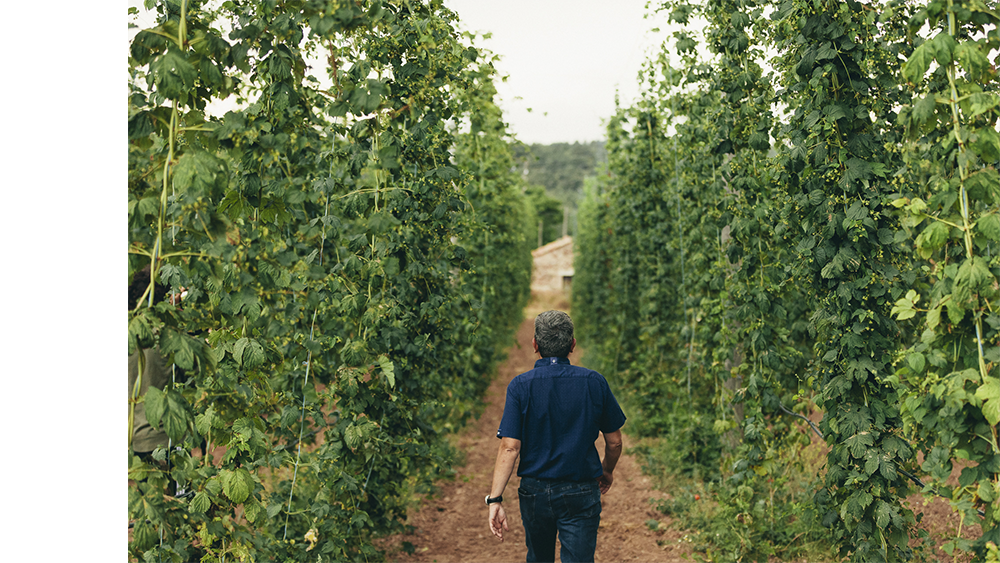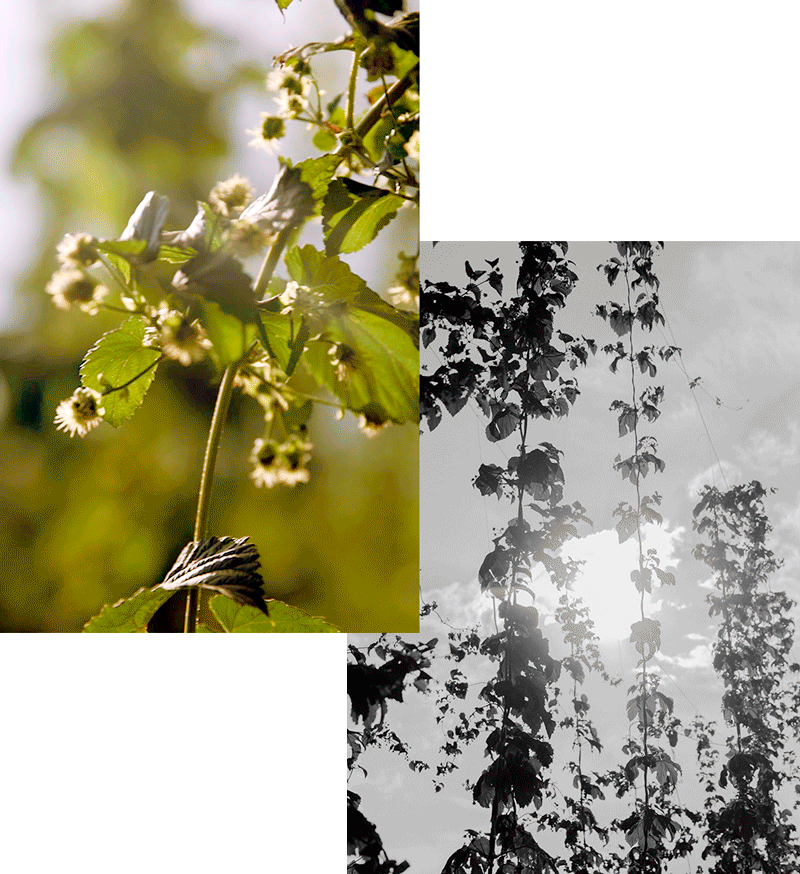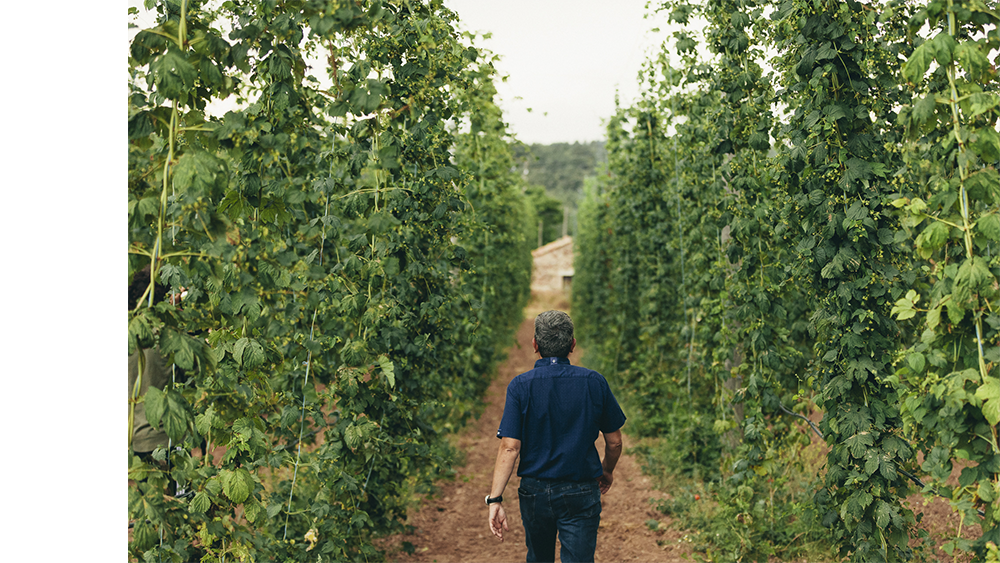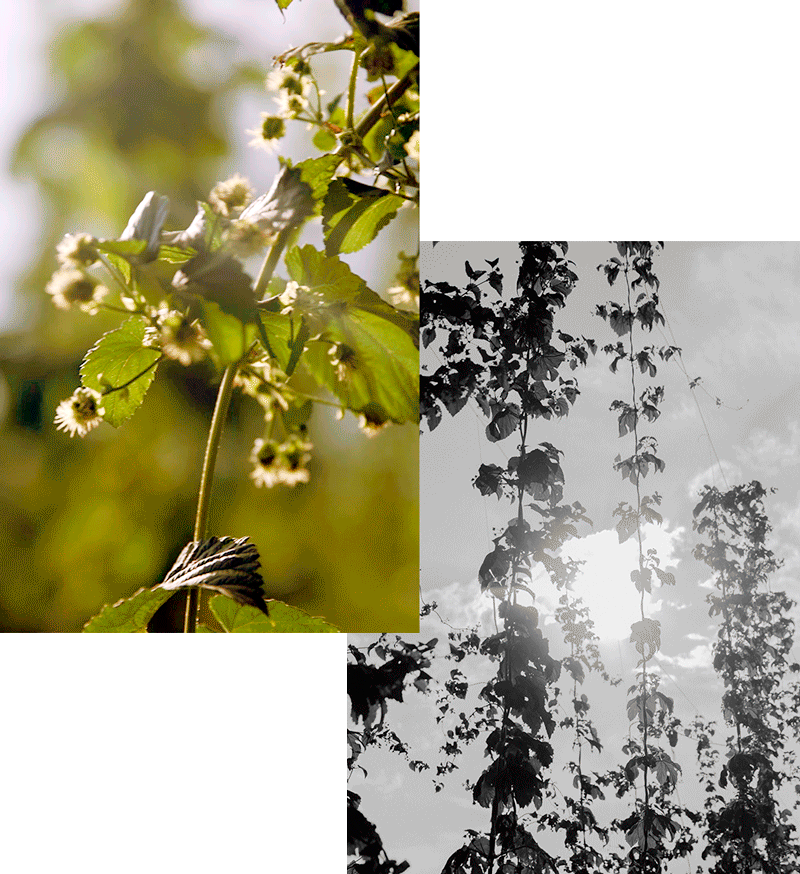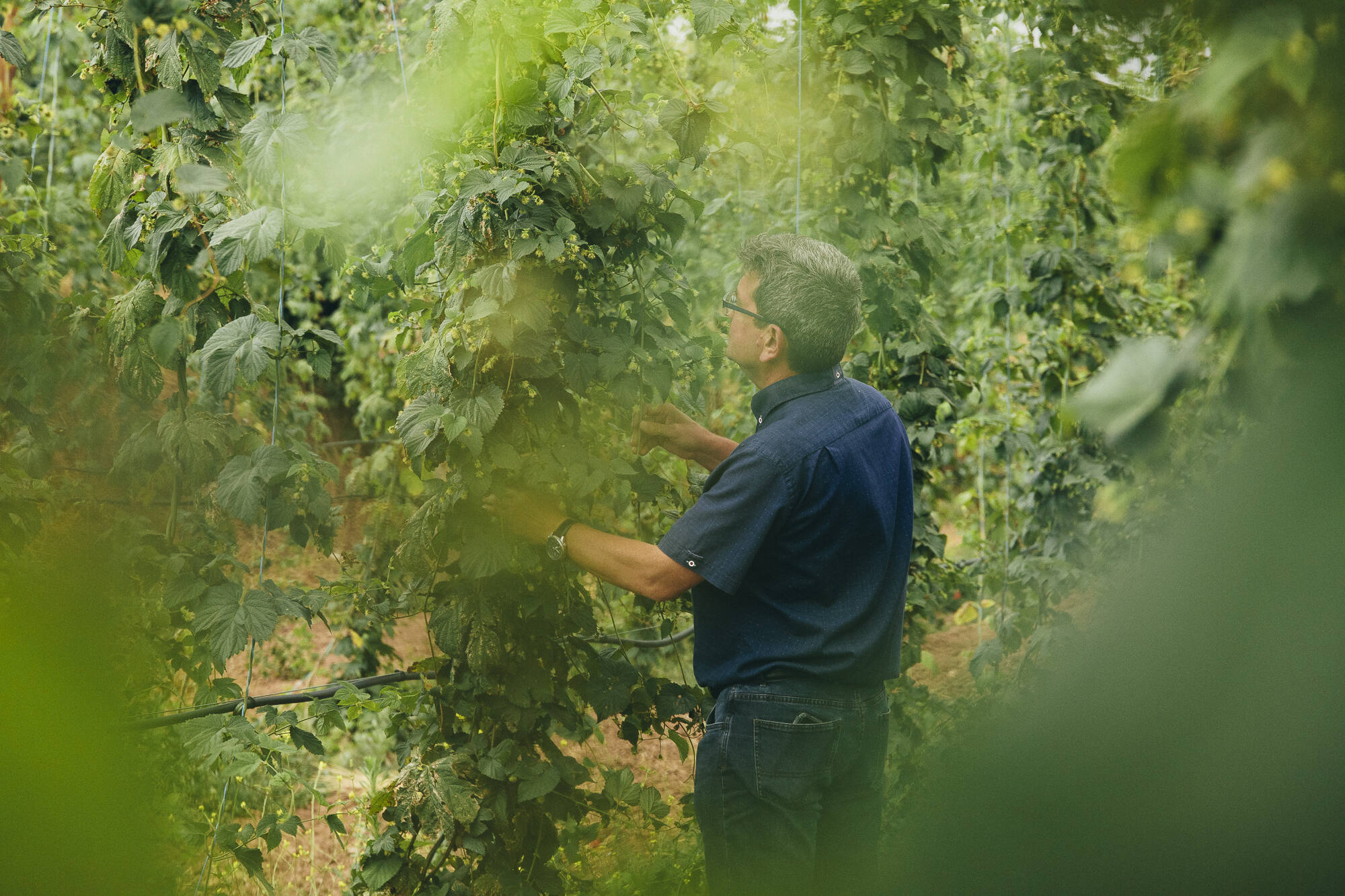Choose your country or region
- Europe
- Spain
- Catalonia
- Portugal
- United Kingdom
- International Version
Barley warehouses
Time to analyse the crop
10.05 h — R. Camarasa’s warehouses are currently receiving constant visits from trucks loaded with freshly harvested barley from the nearby fields. Late July is the key moment of the year, and although the excessive rain during the preceding months did not help, the assessment of the harvest is positive. “Once the plant has blossomed it should not get too much water, that is what has caused the grain to be a little bit thin,” says R. Camarasa as he analyses a sample of barley that has just been unloaded from the truck. The diameter, humidity and protein content of the grain must be assessed to determine whether the load is suitable to be taken to the malt house. If the minimum standards are not met, the load is rejected, but this is not a regular occurrence. Of the roughly 18 truckloads that arrive at the warehouses each day, most of them are accepted and taken to La Moravia, where the barley will be germinated, dried and roasted to turn it into malt, the main ingredient of Estrella Damm.
“Once the plant has blossomed it should not get too much water, that is what has caused the grain to be a little bit thin”
R. Camarasa
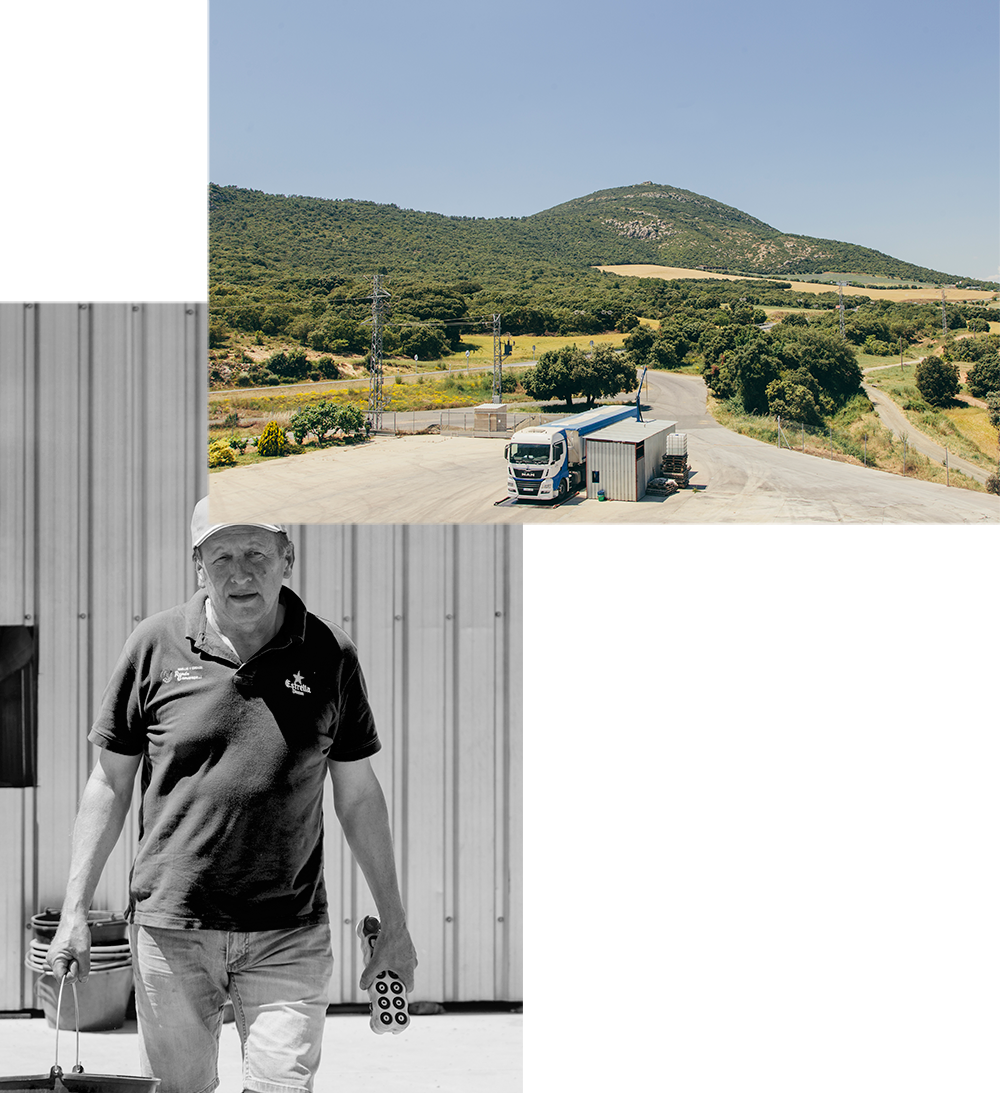
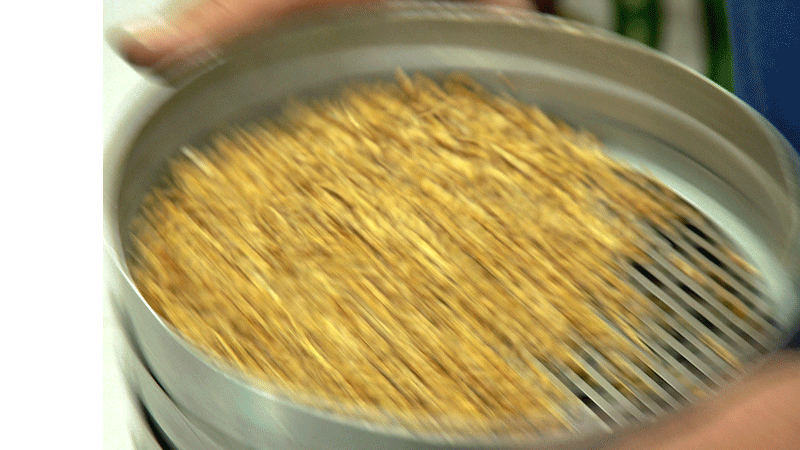
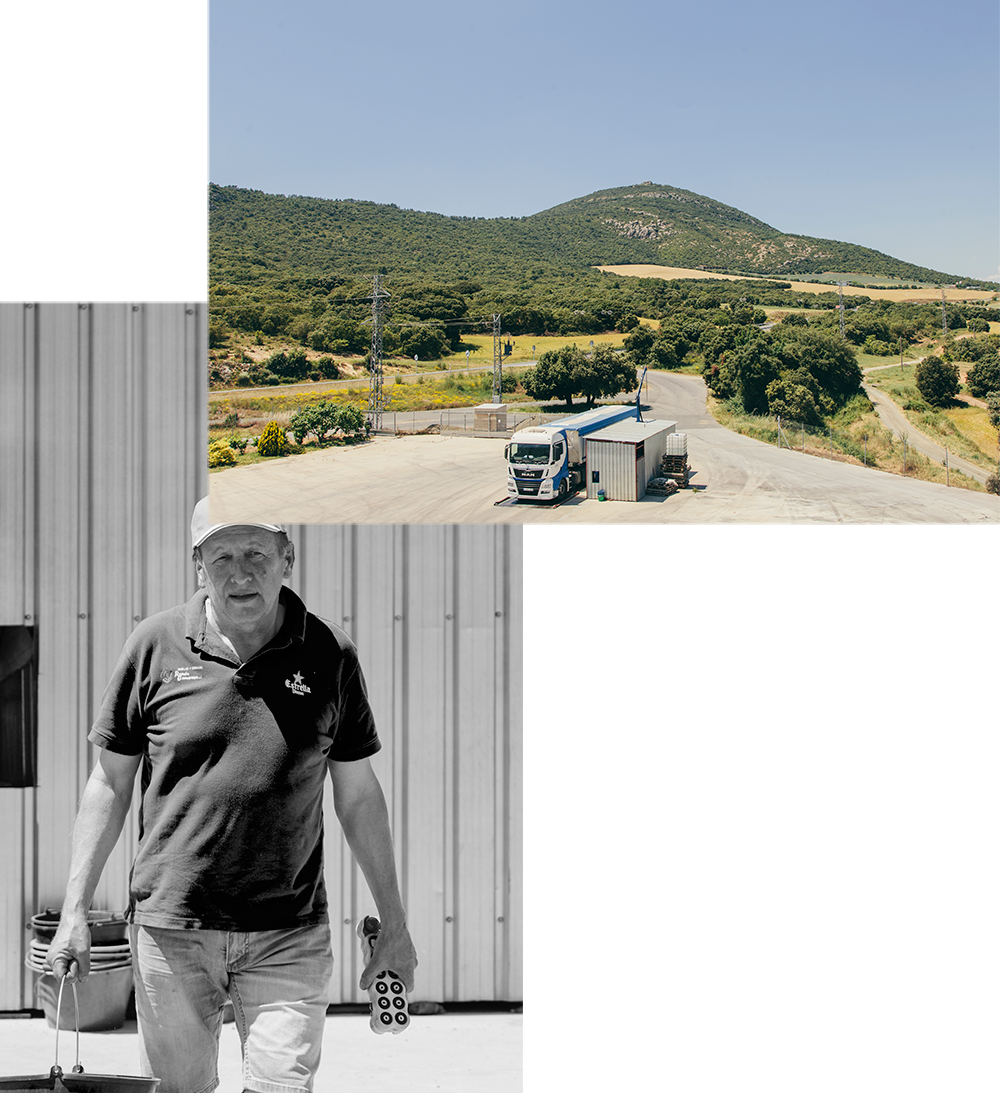
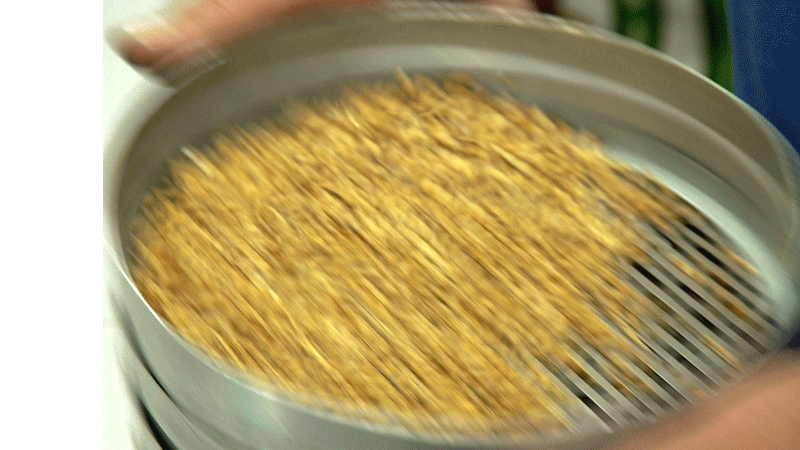
The Damm Factory
From wort to beer: the brewhouse
14.17 h — If we asked ourselves where the heart of our factory lies, we would probably say that it’s in the brewhouse. In here, the work never stops. After all, this is where our Estrella Damm is literally brewed. And if there is one person who knows what goes on inside the 13 boilers, it would be our master brewer K. Peiró. She sums up the brewing process in a very relatable way: “It’s like making tea.” And she’s absolutely right. The first step is to grind the grain, both the barley and the rice, to make the process easier. Then, we apply different levels of heat and the rest of the water. “We need to take into account that time and temperatures affect the wort, and that’s why they are very clearly specified in our recipe,” says K. Peiró, who leaves nothing to improvisation. Overall, the process takes 8 hours, during which time the wort travels through 5 types of boilers. Just before it enters the fermentation tanks, we add the yeast, the ingredient responsible for turning wort into beer.
“Time and temperatures affect the wort, and that’s why they are very clearly specified in our recipe”
K. Peiró
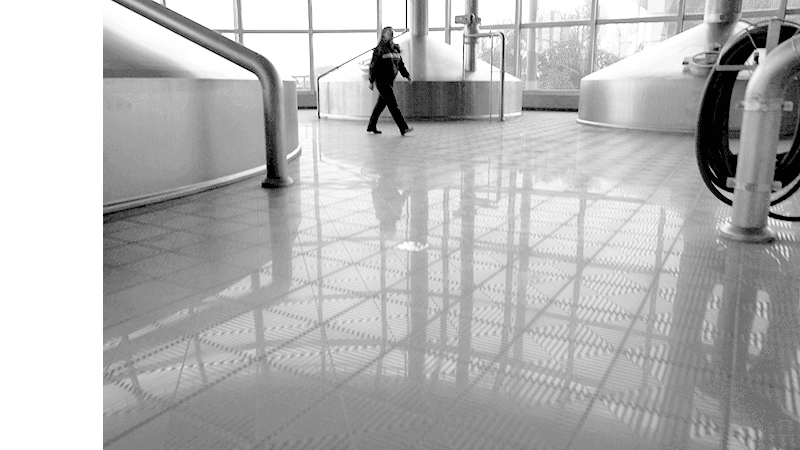
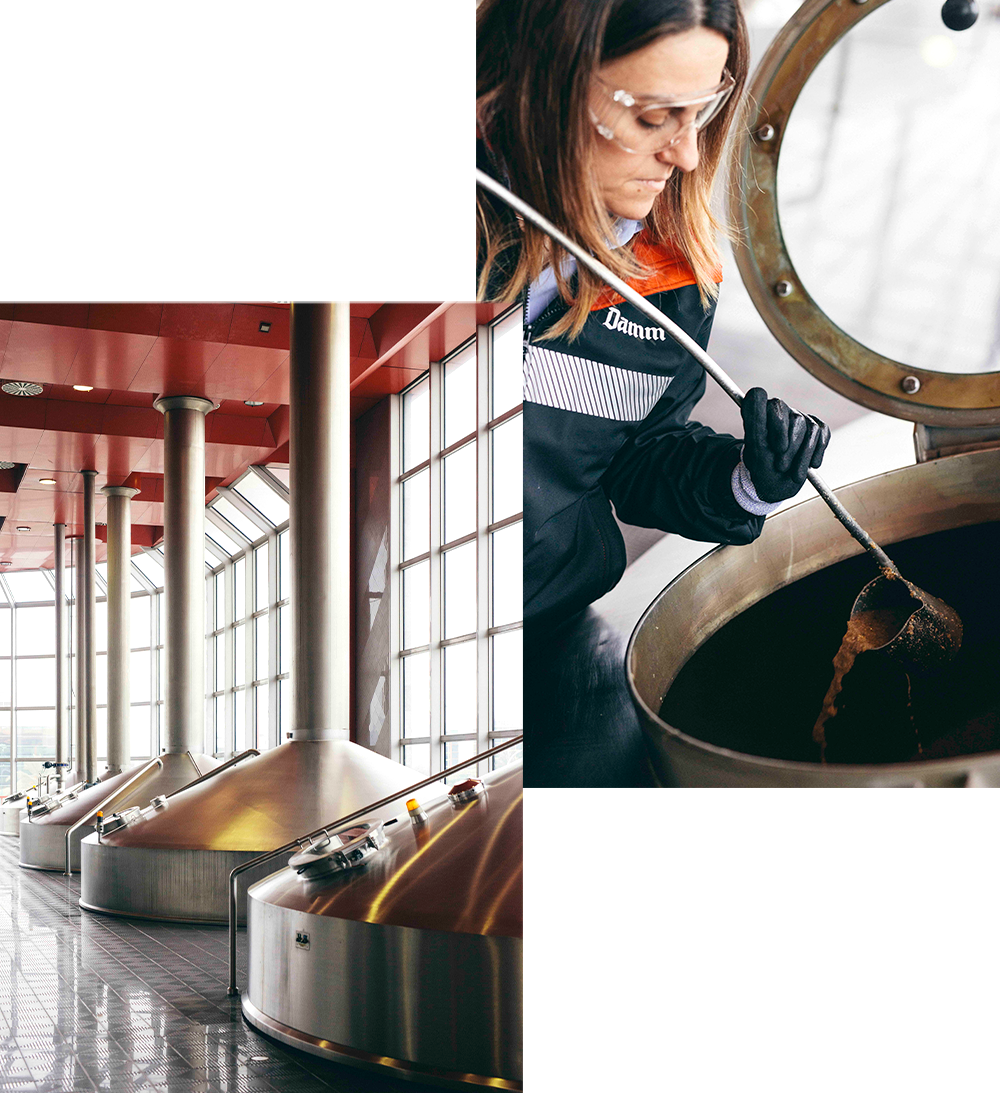
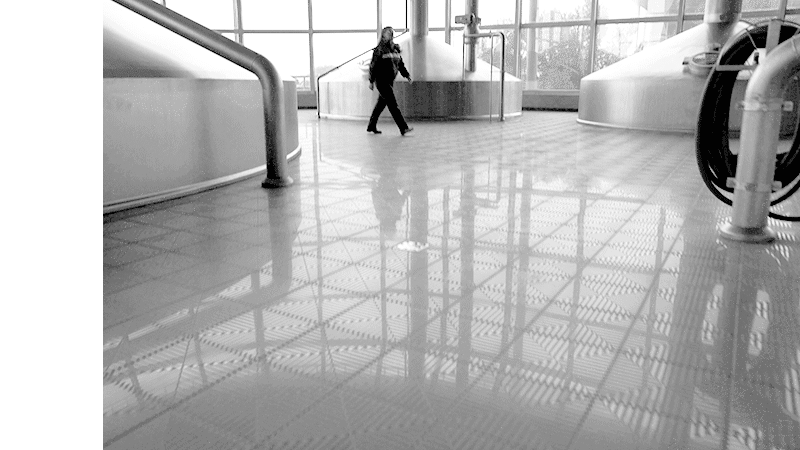
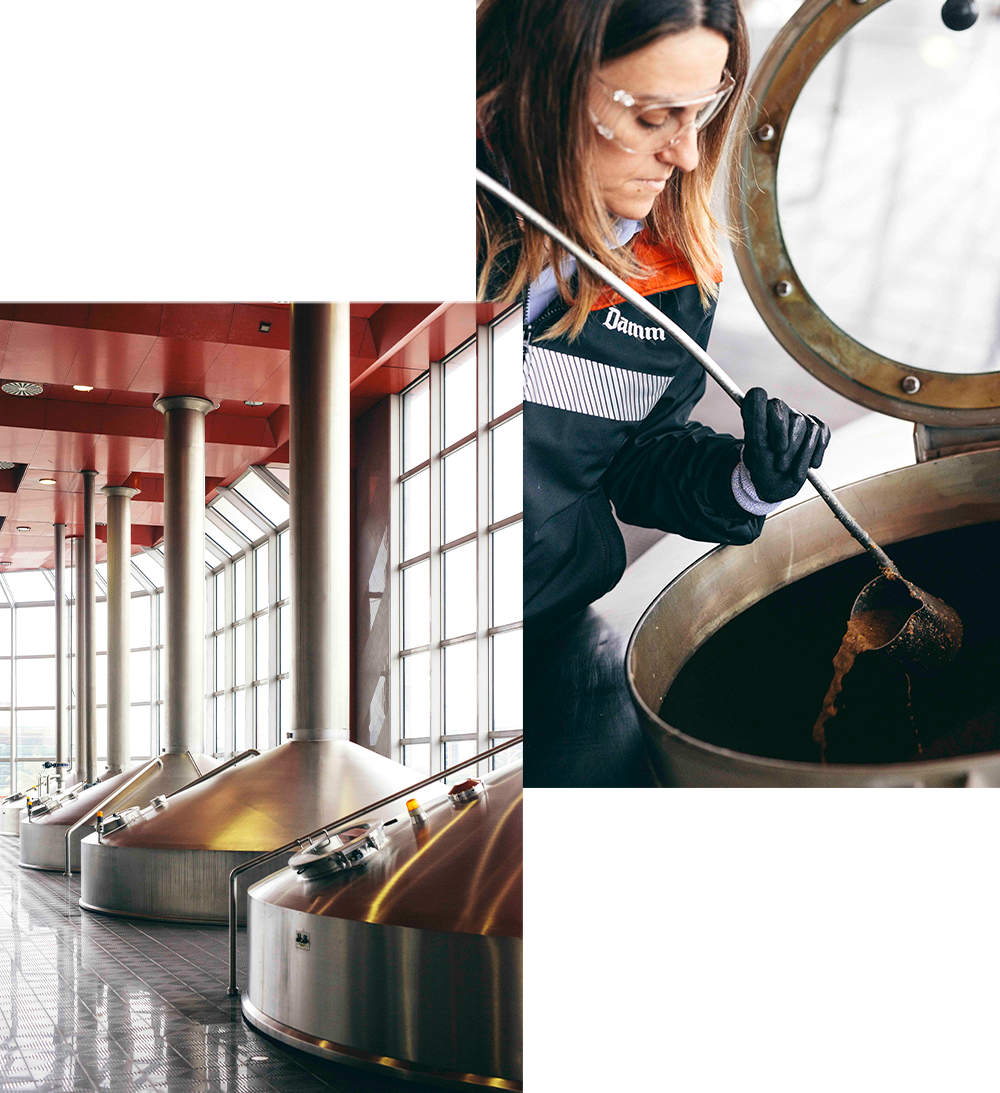
Hop plantation
The first buds appear
19.11 h — In our hop plantation in Prades, the first buds are appearing. This fruit contains the precious lupulin, which is the substance responsible for giving Estrella its characteristic bitter notes. However, it is still too early to be talking about the harvest; although the fields are already fully blossomed, most of the flowers have not become buds yet, and those that have are still not ripe. We won’t see any thick, mature buds that are ready to be harvested for another month. “The first flowers appeared in late June, and now is the time when they begin to become buds from the base,” says C. Abella, head of the plantation. It is worth mentioning that this year’s harvest is expected to be a lot larger than last year’s, not only because there are more plants, but because many of them are in their second year, which means they are closer to their maximum productivity.
“The first flowers appeared in late June, and now is the time when they begin to become buds from the base”
C. Abella
